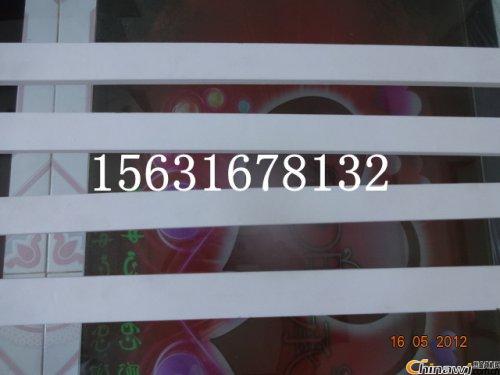Polytetrafluoroethylene plate (also known as tetrafluoroethylene plate, Teflon plate, Teflon plate) is divided into two types: die-casting and turning. Molding plate is formed by polytetrafluoroethylene resin at room temperature by molding, and then sintered. Made by cooling. The PTFE turning plate is formed by pressing, sintering and rotary cutting of polytetrafluoroethylene resin.
Teflon sheet:
Polytetrafluoroethylene plate (also known as tetrafluoroethylene plate, Teflon plate, Teflon plate) is divided into two types: die-casting and turning. Molding plate is formed by polytetrafluoroethylene resin at room temperature by molding, and then sintered. Made by cooling. The PTFE turning plate is formed by pressing, sintering and rotary cutting of polytetrafluoroethylene resin. Its products are widely used and have excellent comprehensive performance: high temperature resistance (-192°C-260°C), corrosion resistance (strong acid, strong alkali, aqua regia, etc.), weather resistance, high insulation, high lubrication, no adhesion, Non-toxic and other excellent characteristics.
PTFE board use:
PTFE plates are used for gasket seals and lubricants working in a variety of media, as well as electrical insulation for use at various frequencies. Capacitor medium, wire insulation, electrical instrument insulation.
Corrosion-resistant lining material and sealing lining, supporting sliders, guide rails, and electrical insulation parts.
PTFE turning board features: PTFE turning board, film, belt made of PTFE molded blanks, it has excellent dielectric properties, no aging, best chemical resistance and A wide range of intensity of use. The film is a non-oriented film, and the non-oriented film is pressed into a oriented and semi-oriented film.
Performance characteristics of PTFE plates
PTFE PTFE sheet is made of 100% pure polytetrafluoroethylene by molding, turning, cutting and other processes. It has the best chemical resistance in known plastics and does not age. It is electrically insulated and has a very low friction coefficient. It can be used at temperatures from -180 to +260 degrees without load. Applicable to sealing materials such as flat pad, V-shaped pad, lining material, lubricating materials such as piston rings and guide rails, electrical insulating materials, anti-adhesive materials, etc.
Http://news.chinawj.com.cn
 Editor: (Hardware Business Network Information Center) http://news.chinawj.com.cn
Editor: (Hardware Business Network Information Center) http://news.chinawj.com.cn 
Optical Microscopy
In optical microscopy different filters are used to improve contrast and emphasize specific features based on material properties. This can be achieved with magnifications typically ranging from 2.5 times up to 1,000 times. In materialography, reflected light is the most commonly used type of light optical microscopy. Transmitted optical microscopy is also used, but mainly for mineralogy specimens.
Stereo Optical Microscopy
The stereo microscope is an optical microscope variant, designed for low magnification observation of a specimen, using the light reflected from the specimen surface.
Scanning Electron Microscopy
A scanning electron microscope (SEM) is a type of electron microscope that produces images of a specimen by scanning the specimen surface with a focused beam of electrons. The electrons interact with the atoms in the specimen, producing various signals that can be translated into information about the surface topography and the composition of the specimen.
Transmission Electron Microscopy
Transmission electron microscopy (TEM) uses a beam of electrons transmitted through an ultra-thin specimen and that interacts with the specimen as it passes through it. Generated signals can be translated into various types of information, including information on the type and orientation of individual crystals.
metallographic sample preparation for microscopy,sample preparation for metallurgical microscope,optical microscope for metallurgy
TROJAN (Suzhou) Technology Co., Ltd. , https://www.trojanmaterials.com